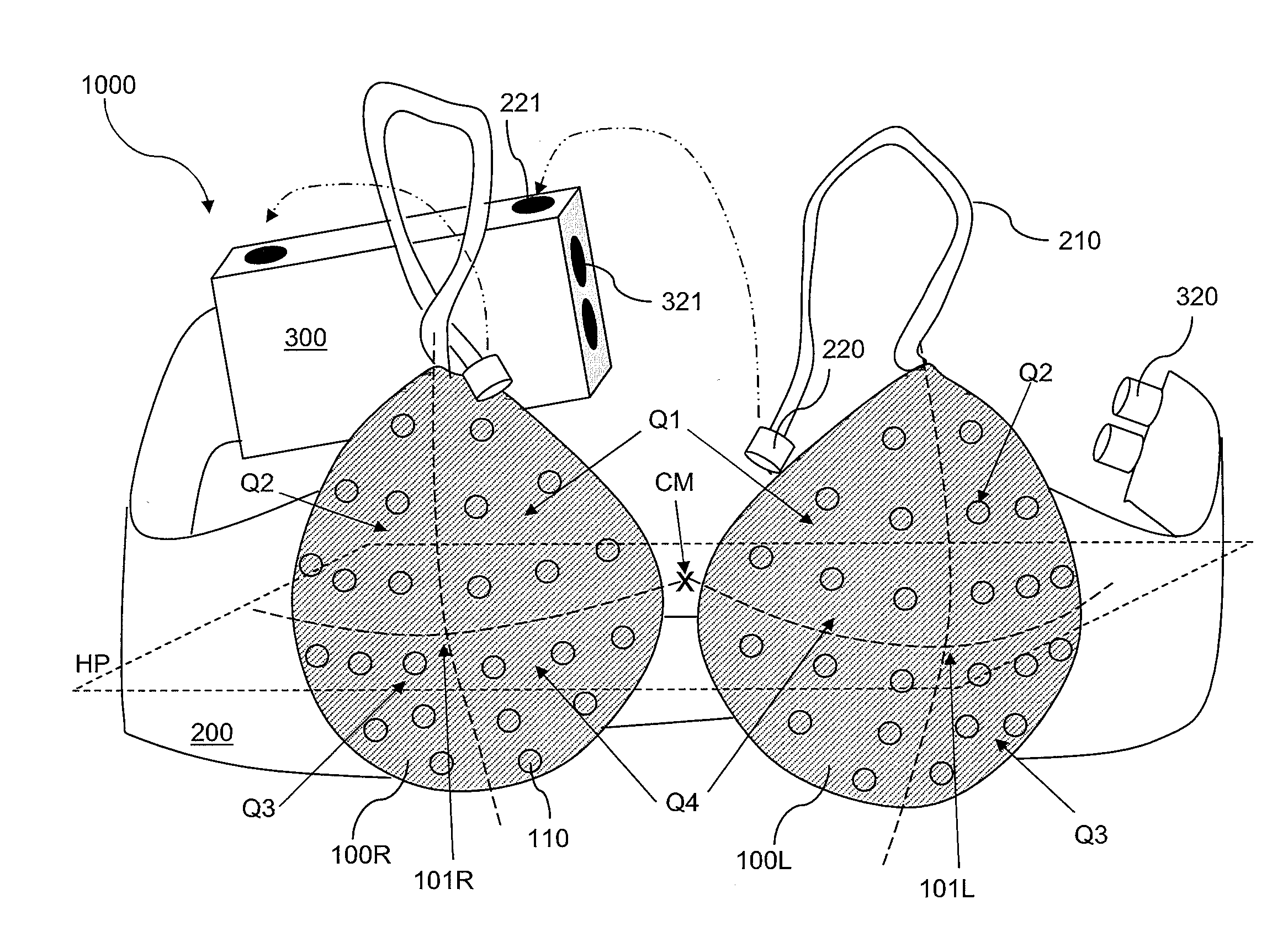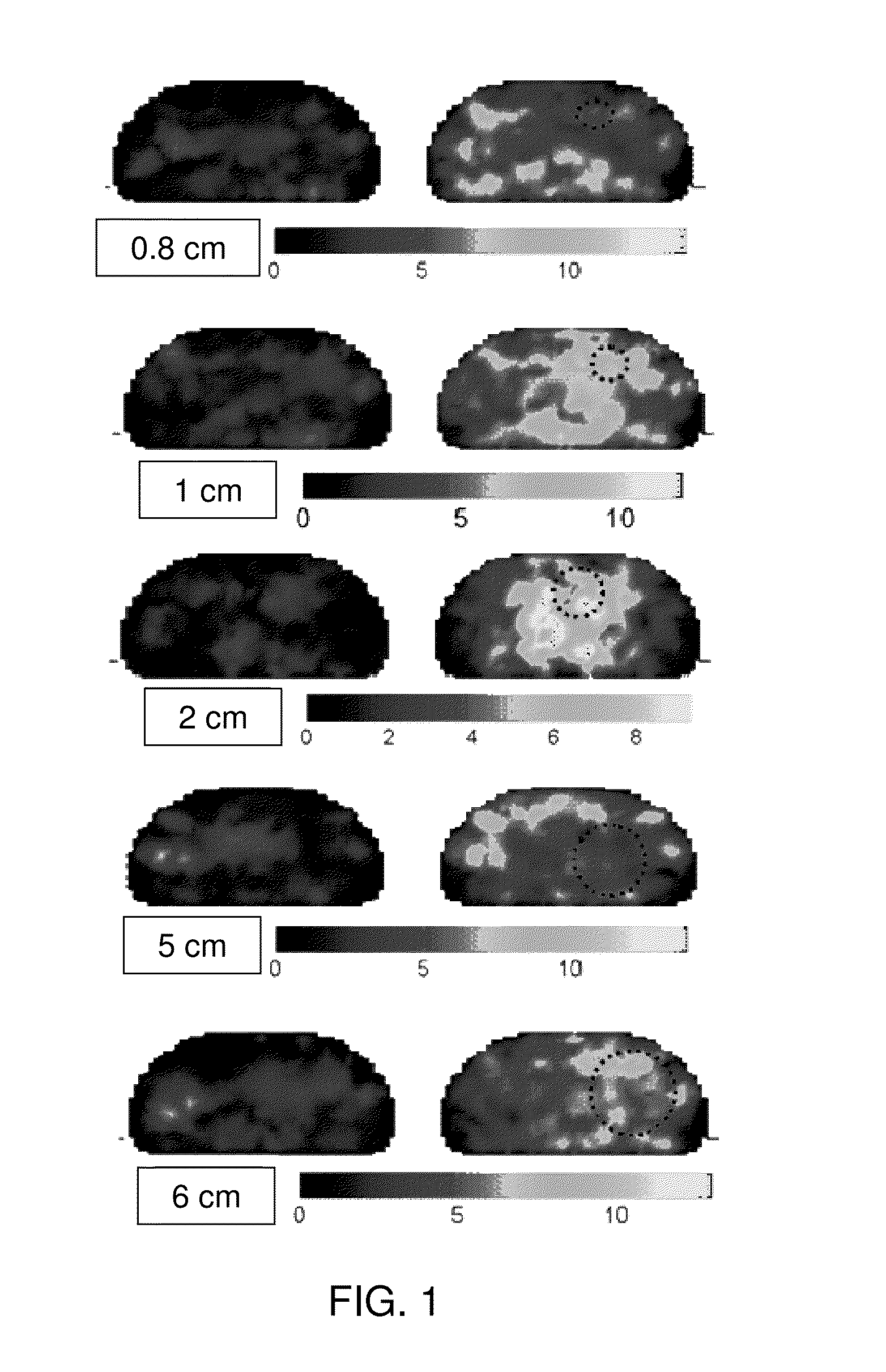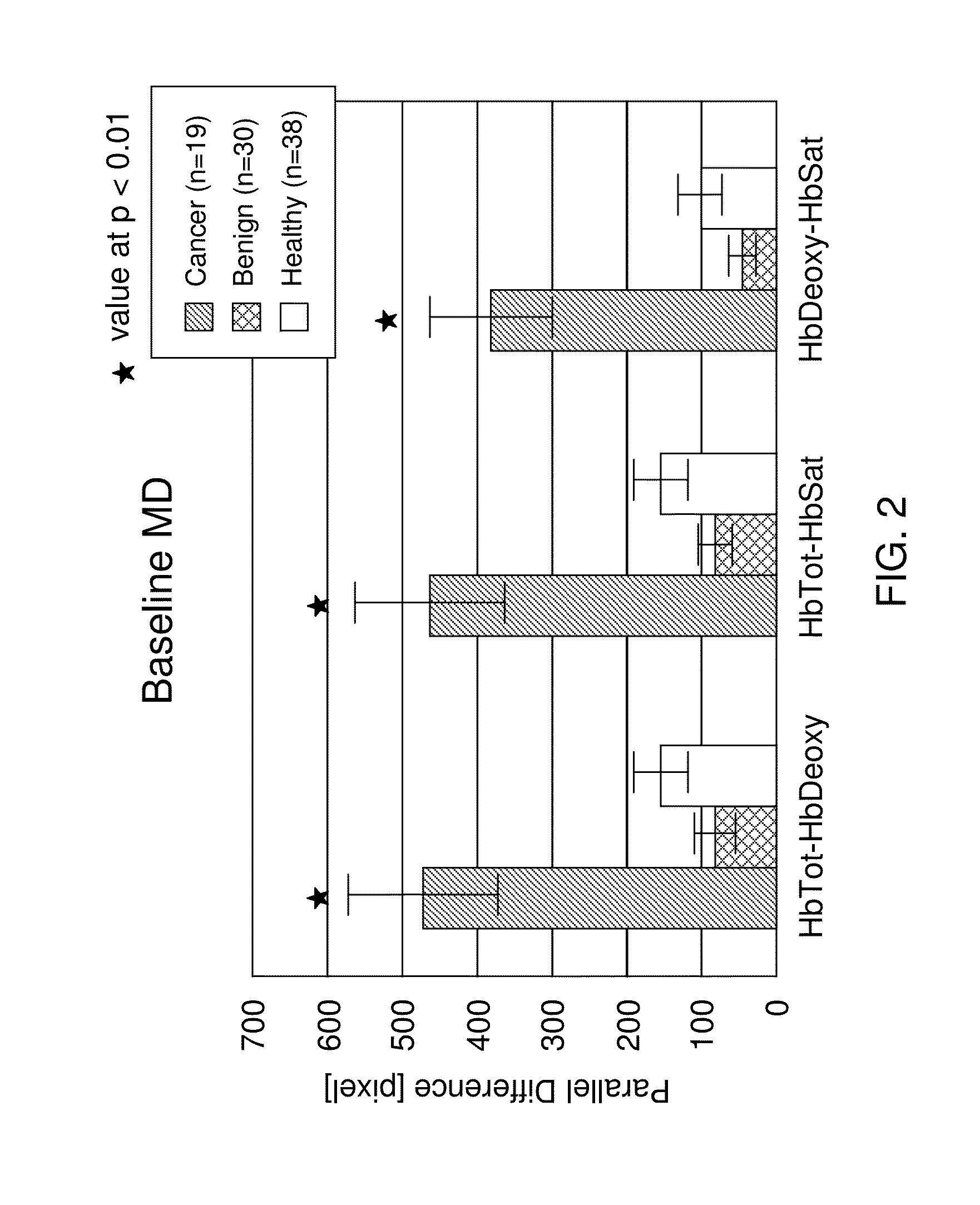Low-cost screening system for breast cancer detection
a screening system and low-cost technology, applied in the field of wearable equipment for breast cancer detection, can solve the problems of high cost of instruments, limited sensitivity of this technique, and unknown risk factors for subsequent cancer developmen
- Summary
- Abstract
- Description
- Claims
- Application Information
AI Technical Summary
Benefits of technology
Problems solved by technology
Method used
Image
Examples
embodiment
Preferred Embodiment
[0041]Apart from the clinical diagnostic sensitivity required to support a screening method, its utility in a home or similarly less supervised environment requires access to simplified, low-cost equipment. Illustrated in FIG. 4 is an exemplary tumor detector according to an embodiment of the present disclosure. A limited sensing array is bilaterally incorporated into a dark colored brassiere that conforms to the appropriate chest and breast size for the individual undergoing the optical examination. As used herein, a “brassiere” refers to any structure that a normal female human being can wear around her breast in a manner that covers both of her breasts without a substantial risk of disengagement of the structure from her breasts unless consciously disengaged. The brassier may be portable, which means that the brassier may be taken to any location without regard to mechanical connection or support that is available only at specific locations. The brassier can b...
PUM
 Login to View More
Login to View More Abstract
Description
Claims
Application Information
 Login to View More
Login to View More - R&D
- Intellectual Property
- Life Sciences
- Materials
- Tech Scout
- Unparalleled Data Quality
- Higher Quality Content
- 60% Fewer Hallucinations
Browse by: Latest US Patents, China's latest patents, Technical Efficacy Thesaurus, Application Domain, Technology Topic, Popular Technical Reports.
© 2025 PatSnap. All rights reserved.Legal|Privacy policy|Modern Slavery Act Transparency Statement|Sitemap|About US| Contact US: help@patsnap.com



